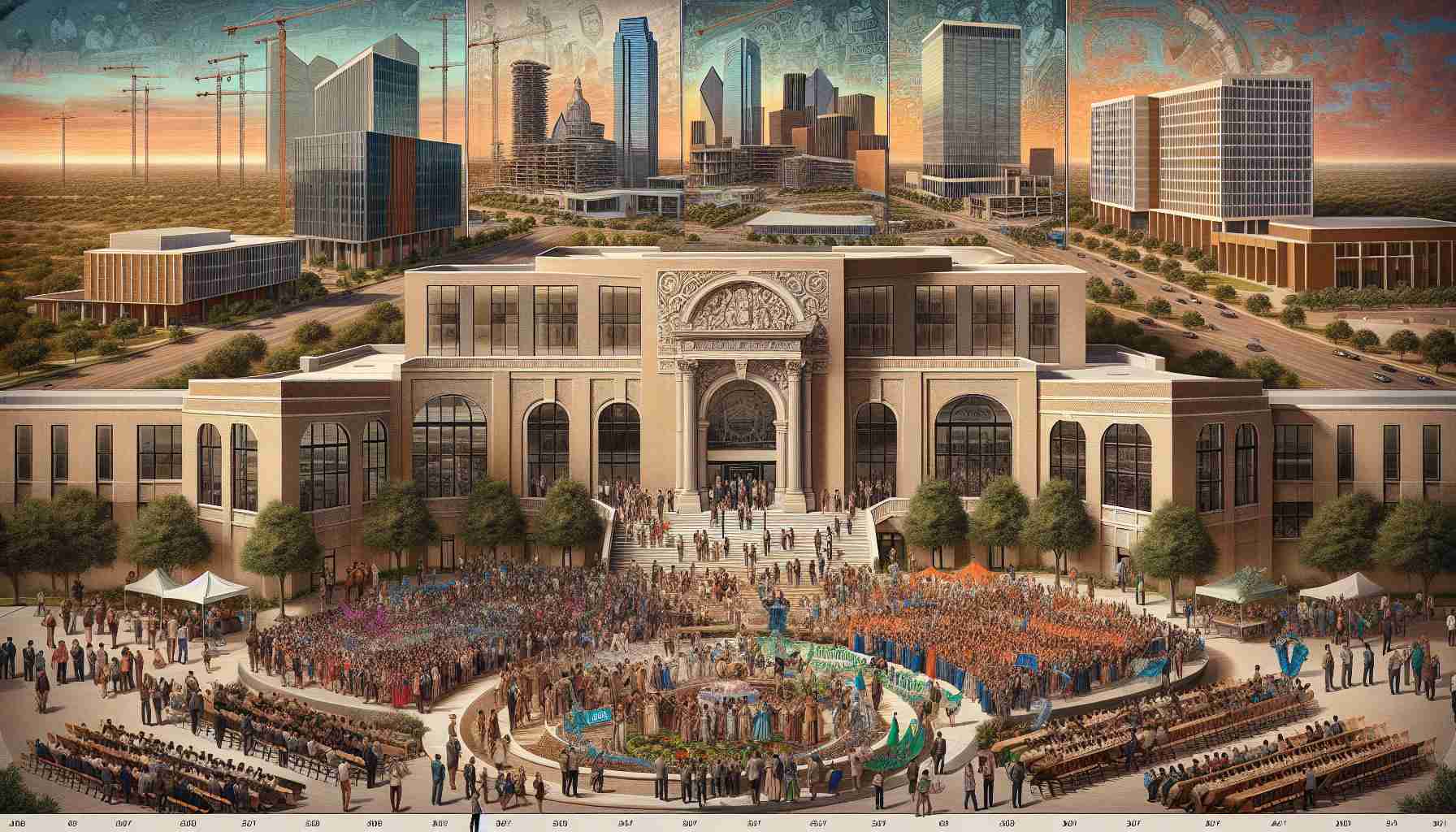
In 2017, the University of Texas at Dallas made the controversial decision to tear down its beloved Art Barn, a structure that had served as the hub for the visual arts department since the 1970s. Despite its iconic status and a passionate community desire to preserve it, university officials deemed the building outdated and beyond repair.
Fast forward to last month, when UT Dallas proudly presented a new centerpiece of its cultural ambitions: a state-of-the-art arts facility that acts as an extension of the Crow Museum of Asian Art. This striking new structure, characterized by its elegant white façade, stands in stark contrast to the modest Art Barn. Designed by Morphosis, the innovative architecture firm based in Los Angeles, this $63.5 million project marks the emergence of a new cultural district on campus, aptly named the Edith and Peter O’Donnell Jr. Athenaeum.
The vision for this district was initially inspired by Rick Brettell, a prominent UT Dallas faculty member and passionate advocate for the arts. Although Brettell passed away in 2020, his dream of an enriching cultural environment is being pursued, albeit with significant alterations. Instead of a collection of smaller, interconnected structures designed for intimacy and contemplation, the current plan emphasizes a singular striking design.
The centerpiece Crow Museum features expansive galleries illuminated by natural light and innovative architectural elements that invite exploration. While it aims to celebrate art in a modern context, the departure from Brettell’s original vision marks a significant shift in the university’s approach to cultural development.
Transformation of UT Dallas Cultural Landscape: A Shift in Vision and Values
The transformation of the cultural landscape at the University of Texas at Dallas (UT Dallas) has become a focal point of discussion not just for the university community, but also for the broader cultural and artistic discussions in the region. As UT Dallas transitions from the nostalgia of the Art Barn to the modernity of the Crow Museum extension, several important questions arise about the implications of this transformation.
What are the core objectives of UT Dallas’s cultural transformation?
The primary objective is to establish the university as a significant cultural hub that fosters creativity, engagement, and interdisciplinary collaboration. By investing in state-of-the-art facilities, UT Dallas seeks to attract not only students and faculty but also the local community and visitors. The aim is to provide a platform for diverse forms of artistic expression and education.
What key challenges accompany this transformation?
One of the main challenges has been balancing the desire for modernization with community preservation desires. The demolition of the Art Barn sparked considerable debate, highlighting tensions between contemporary architectural visions and the preservation of beloved cultural landmarks. Additionally, funding for such large-scale projects is a constant concern, necessitating careful financial planning and management.
Are there any controversies associated with the redesign?
Yes, the shift from Rick Brettell’s vision to the new architectural approach has generated mixed responses. While many embrace the sweeping statement that the new facility represents, others mourn the loss of smaller, more intimate art spaces that encouraged a different kind of interaction with the arts. This contrast reveals a broader controversy within cultural institutions regarding scaling and accessibility versus grandeur and visibility.
What are the advantages and disadvantages of this cultural shift?
Advantages:
– Enhanced Facilities: The new arts facility promotes greater engagement with national and international exhibitions, potentially raising UT Dallas’s profile in the art world.
– Cultural Investment: A focus on modern design could attract higher-profile artists and events, which may benefit the local economy and elevate the cultural literacy of students and residents alike.
– Interdisciplinary Opportunities: The new space becomes a hub where various departments can collaborate on creative projects and initiatives.
Disadvantages:
– Loss of Heritage: The emotional toll associated with displacing historical structures like the Art Barn cannot be understated, leading to disenfranchisement among long-time faculty, alumni, and supporters of the arts.
– Financial Strain: The substantial financial commitment to these modernization projects may detract from funding for other crucial academic programs or scholarships, especially if budgets are tight.
– Risk of Alienation: The grand nature of the new facilities may unintentionally alienate certain demographics within the community who may feel intimidated by or disconnected from the new art spaces.
Moving Forward
As UT Dallas continues to forge ahead with its cultural transformation, addressing these questions and challenges will be crucial. Engaging the community in meaningful ways throughout this process could foster a sense of collective ownership and appreciation for the evolving cultural landscape.
For more information about this ongoing journey, visit UT Dallas.



